
views
Before Your Appointment

Talk to an expert about your tattoo to ease your mind. If you've never had a tattoo, the best way to mentally prepare yourself is to get rid of the mystery surrounding it. Ideally, you want to walk into your tattoo appointment without too much anxiety — the more relaxed you are, the easier your experience will be. Try talking to people who have many tattoos or the staff at your local tattoo parlor about their experiences getting tattoos. Most will be happy to talk. Everyone's pain tolerance is different. While tattoos are uncomfortable for most people, they aren't anywhere near things like childbirth and kidney stones. Most people you talk to should confirm this.
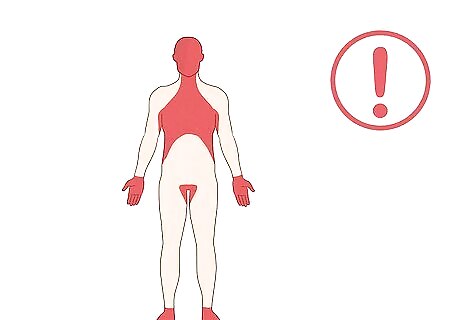
Learn where tattoos hurt the most. A good amount of the pain from your tattoo is affected by the location on your body where you get it. If you're looking to minimize your pain, you may want to move it to one of the less-painful areas. While everyone's body is different, in general: Areas with lots of muscle (arms, legs, upper pectorals) and areas with lots of fatty padding (glutes, hips, etc.) tend to hurt the least. Sensitive areas (breasts, underarms, face, groin) and "hard" areas close to bones (scalp, face, collarbone, ribs, hands, feet) tend to hurt 'the most.
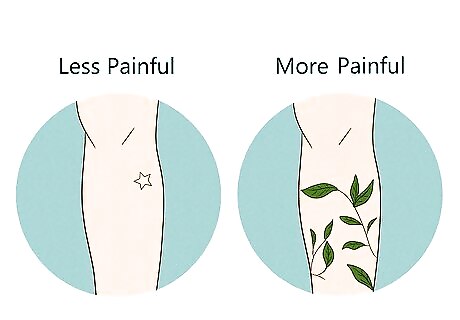
Learn which tattoos hurt the most. All tattoos are not created equally. The pain level of your tattoo experience can also be affected by what, exactly, you're getting put onto your body. While some exceptions exist, in general: The smaller and simpler a tattoo is, the less painful it will be. Large, detailed designs hurt much more. Black and gray tattoos are less painful (and take less time) than multi-color tattoos. Areas of solid color hurt the most because they require the artist to go over their work several times.

Arrange for someone to come with you. You don't have to endure your tattoo experience alone. If you can, try taking a friend or family member whose company you enjoy. Having someone who cares for you makes the experience much easier — you'll have someone to talk to about your jitters beforehand and someone to give words of encouragement when you run into pain. If you aren't too shy, try making a social event out of your tattoo appointment. Many tattoo parlors allow small groups to hang out in the lobby or even in the room where the tattoo is being done if they aren't unruly. Having a group of people to encourage you — even cheer for you — can make getting a tattoo a once-in-a-lifetime experience.
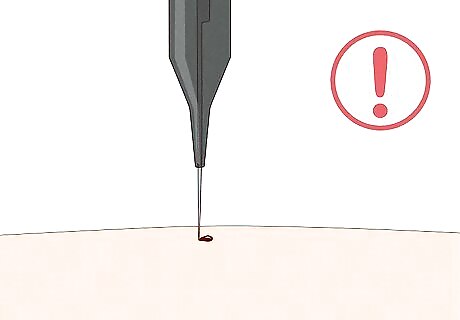
Know that there will be needles and a small amount of blood. A modern tattoo machine is essentially a small set of needles that go in and out of the skin very quickly, leaving a little ink each time. This basically has the effect of making lots of tiny cuts in the area where the tattoo is. Almost everyone who gets a tattoo bleeds a little bit from this. If any of this process makes you feel faint or nauseous, you should plan not to watch. Don't be afraid to explain your situation to your tattoo artist. A good one will be more than happy to help you get through your tattoo with minimal discomfort.
While You're Getting the Tattoo
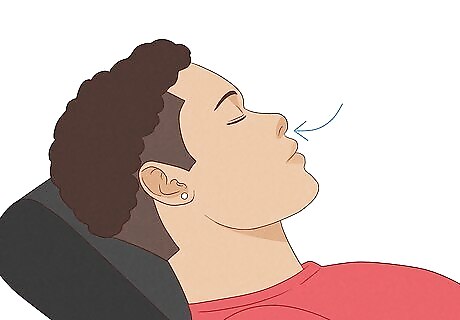
Calm yourself. It's hard to relax right before the tattoo artist starts drawing, but if you can, your experience will be easier. Try taking a few deep breaths, talking to your friend or family member, or even chatting with the tattoo artist. These things will help you relax and quit focusing on what's about to happen. If you're very worried going into your appointment, call ahead of time and ask whether you might be allowed to bring items that help you relax. For instance, you might try bringing an MP3 player to listen to your favorite relaxing tunes during your appointment. Many parlors will give you a good deal of freedom as long as your items don't interfere with the tattoo artist's job.
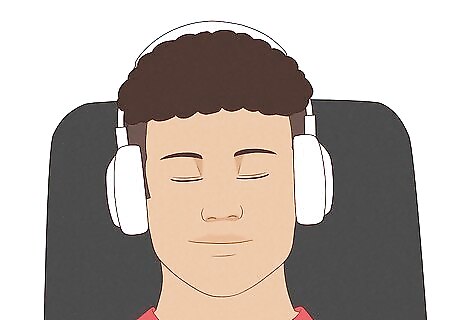
Make yourself as comfortable as possible. Depending on the size and detail level of your tattoo, you may be in the parlor for up to a few hours. While you'll get breaks to get up and move around, a little bit of preparation can make your appointment much more comfortable. Below are a just a few things you may want to consider: Have a meal before your appointment. Have a glass or two of water to avoid dehydration and reduce the possibility of fainting. Wear loose, comfortable clothing you won't mind sitting in for a long time. Bring anything you'll need to entertain yourself during your appointment (music player, reading material, etc.) Go to the bathroom before your appointment starts.
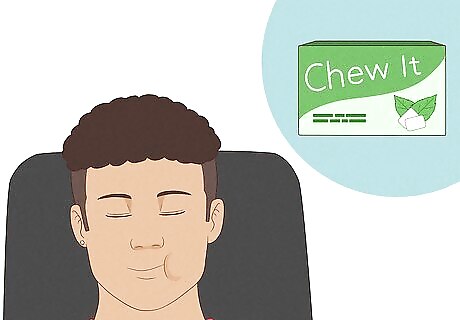
Squeeze or chew something to relieve pain. Tensing your muscles in an area you aren't getting tattooed by squeezing something in your hand or biting down on something can actually reduce pain significantly. In fact, it's a technique that's use to reduce pain for women during labor — and it works quite well. Many tattoo parlors will have something for you to use, but if yours doesn't, consider bringing one of the following: Stress ball Grip exerciser Protective mouthpiece Gum Soft candy Towel, wooden spoon, etc. Don't bite down if there's nothing soft in your mouth. Simply gritting your teeth can cause dental damage.
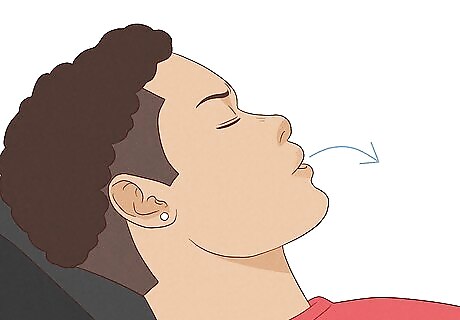
Exhale during especially painful periods. Even something as simple as controlling your breathing can make getting a tattoo more bearable. Try to exhale when you feel the worst pain. You can do this either by breathing out or by making a gentle noise (like a low hum). Exhaling during stress or exertion makes it easier to "power through" the pain. This is why most fitness resources will recommend exhalation on the "up" phase of a weightlifting exercise. On the other hand, it's possible to make tattoo pain worse if you breathe incorrectly. Try to resist the urge to hold youbreathing-during-exerciser breath during painful moments. This can make tattoo pain more distracting.
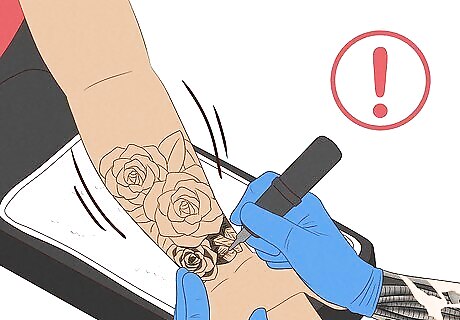
Move as little as possible. It can be tempting to squirm during particularly painful stretches of your tattoo appointment. Try your best not to. The less you move, the more precise the artist can be and the quicker your appointment will go. After all, it's harder for an artist to draw on a canvas that won't sit still. If you do have to move, warn your artist beforehand so that they have a chance to remove the tattoo gun from your skin. You do not want to accidentally cause the artist to make a mistake — tattoos are permanent.
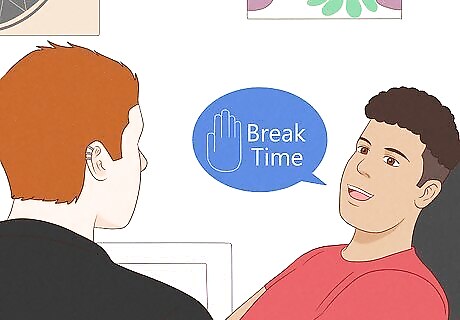
Don't be afraid to take breaks. Almost every tattoo artist will tell you this before they start, but it bears repeating: you should ask your artist to take a break if the pain ever becomes too much. Most don't mind, and would prefer not to make your experience an unnecessarily painful one. Don't hesitate to take a 2-minute break and then go back to your tattoo. Don't be embarrassed to ask for a break. Most tattoo artists work on clients with a wide variety of pain tolerances and have "seen it all" when it comes to painful reactions. Remember, you are paying for this, so do what you need to do for you!
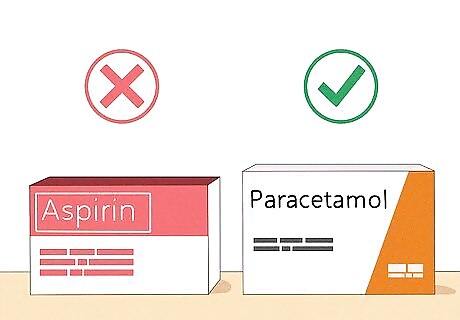
Try an OTC pain medication (but not a blood thinner). If you're finding the pain really uncomfortable, you may want to try taking a small dose of an over-the-counter (OTC) painkiller before your appointment. However, don't take a pain medication that contains blood-thinning agents or causes blood thinning as a side effect. These aren't especially dangerous for tattoos in small doses, but they can make you bleed more. One great OTC painkiller that doesn't contain blood thinners is acetaminophen (also called Tylenol or paracetamol). Other common OTC painkillers like Ibuprofen, aspirin, and naproxen sodium do act as blood thinners.
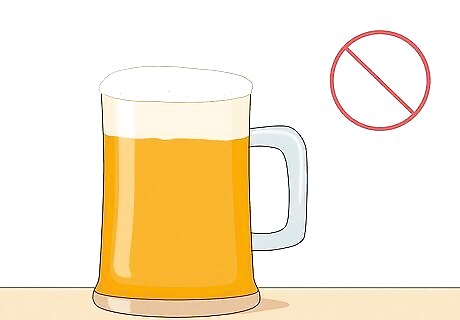
Don't dull the pain by getting drunk. While it can be tempting to show up to your tattoo appointment inebriated (especially if you're treating it as a social event), this is a very bad idea. Most reputable tattoo parlors won't agree to do work on someone who is obviously drunk. This is for good reason — drunk customers have a tendency to be louder, more unruly, and make tattoo decisions that they regret later. In addition, alcohol is known to act as a mild blood thinner, leaving you bloodier than you normally would be.

Listen to your artist's care instructions. It's normal for your new tattoo to be sore for a few days after it's finished. As soon as the appointment is over, your artist will give you detailed instructions on how to care for your tattoo. Follow these carefully and the pain you experience will be minimal and short-lived. The exact steps your artist tells you to follow may vary slightly from the ones in this article. In general, you will want to keep your new tattoo clean and dry, protect it from irritation, and frequently apply antibiotic ointments until it heals. Avoid touching the fresh tattoo with unwashed hands or anything else non-sterile. If you accidentally touch it, wash it gently with soap and water, then pat it dry with a paper towel. Accidentally transferring bacteria into a tattoo wound can lead to a painful infection (plus, it may change the way your tattoo looks).
















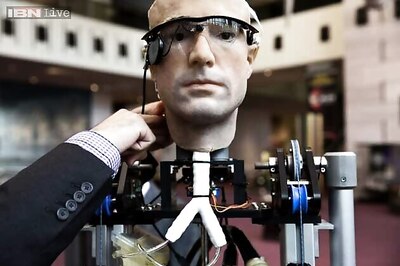
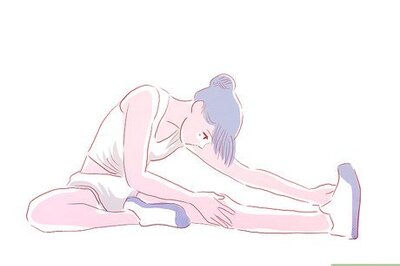

Comments
0 comment